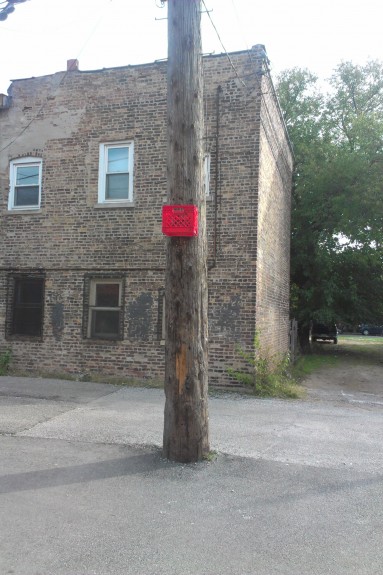I was riding to a party at a friends house when I heard a clattering below me. I looked down and realized that three spokes had broken, likely casualties of a winter of moisture and corrosive salts and a springtime of crater-like potholes.
I needed to get around the West Side to run a few errands and get a new wheel, so I decided to try Chicago’s Divvy bike share service as there were a number of stations that popped up around my neighborhood.
I was originally skeptical about the service because the price tag ($7/24 hours, $75/year) seemed a bit steep compared with the price of the service that I had used in Milan over the summer. But, for the utility it gave me, $7 felt pretty fair. I think the price is still steep for avid cyclists who might be visiting the city for more than a few days and wish there was a weekly option available. Similarly, the yearly pass is a good deal, but you have to wait for the service to mail you a fob. It would be nice to be able to buy a yearly membership and use it right away.
The bike felt heavy and slow compared to my usual ride, but the thick tires and upright riding position felt good and easy to navigate the craggy streets. Even though I’m short, the seat heights were set extremely low on many of the bikes at the station (if not stuck, they’re adjustable with a quick-release skewer) and I wonder how many Divvy users are losing a lot of efficiency by not adjusting the seatpost. The tires were pretty well inflated and the disk brakes worked well. It struck me that for many riders, the Divvy bikes likely offer a more comfortable, fun and safe riding experience than the poorly constructed or badly maintained bike in their garage. In some ways, the yearly membership is a good option for someone who doesn’t want to worry about purchasing, maintaining and securing a decent bike. Hopefully, the service will do a good job of maintaining the bikes.
I took a quick look at the system map and found that there were stations really close to where I needed to go. The stations are pretty visible, so I had some sense of where they were from my usual routes around the city. My favorite thing about using the Divvy bike was the way it changed my usual patterns. Since I couldn’t go directly to my destination, I was forced to walk down blocks I wouldn’t usually visit. While the primary goal of a transit system should be to get people where they need to go efficiently, I like public transportation because it’s another way to experience the city. I appreciated the interruption to my routine that having to find and dock the bikes at the stations offered.
While I enjoyed my experience with the service, I am concerned about how the service and its expansion exists within broader development dynamics in Chicago. It’s a highly visible asset that makes the city more livable to some, while big, tough problems like public education, access to affordable mental health care and residential segregation continue to persist. Meshing transportation is a need for many city residents, and Divvy could be a platform, just like other transit systems, that brings together Chicagoans from different parts of the city and different cultural and economic backgrounds on relatively equal terms. Unfortunately, there are a number of factors that mediate Divvy as a node in a social mesh for Chicago. Having nearby stations, having a credit card, having Internet access to find information or sign up, having $75 to spend all at once, having the physical ability or experience and comfort to ride in city traffic. If there are efforts to address some of these things, I’d love to know more. While these shortcomings aren’t a reason to completely hate on the service, I can’t think of the service without thinking about city priorities and who they privilege.

